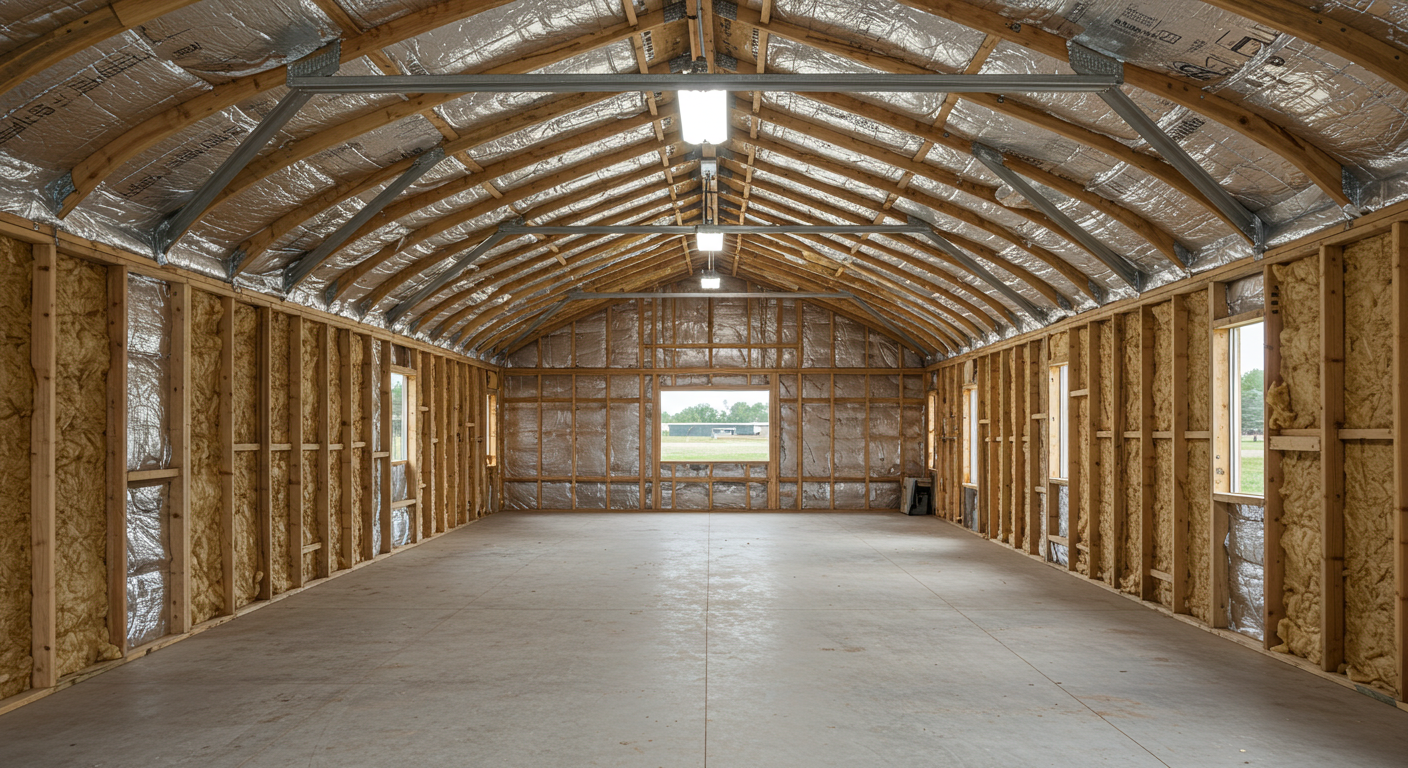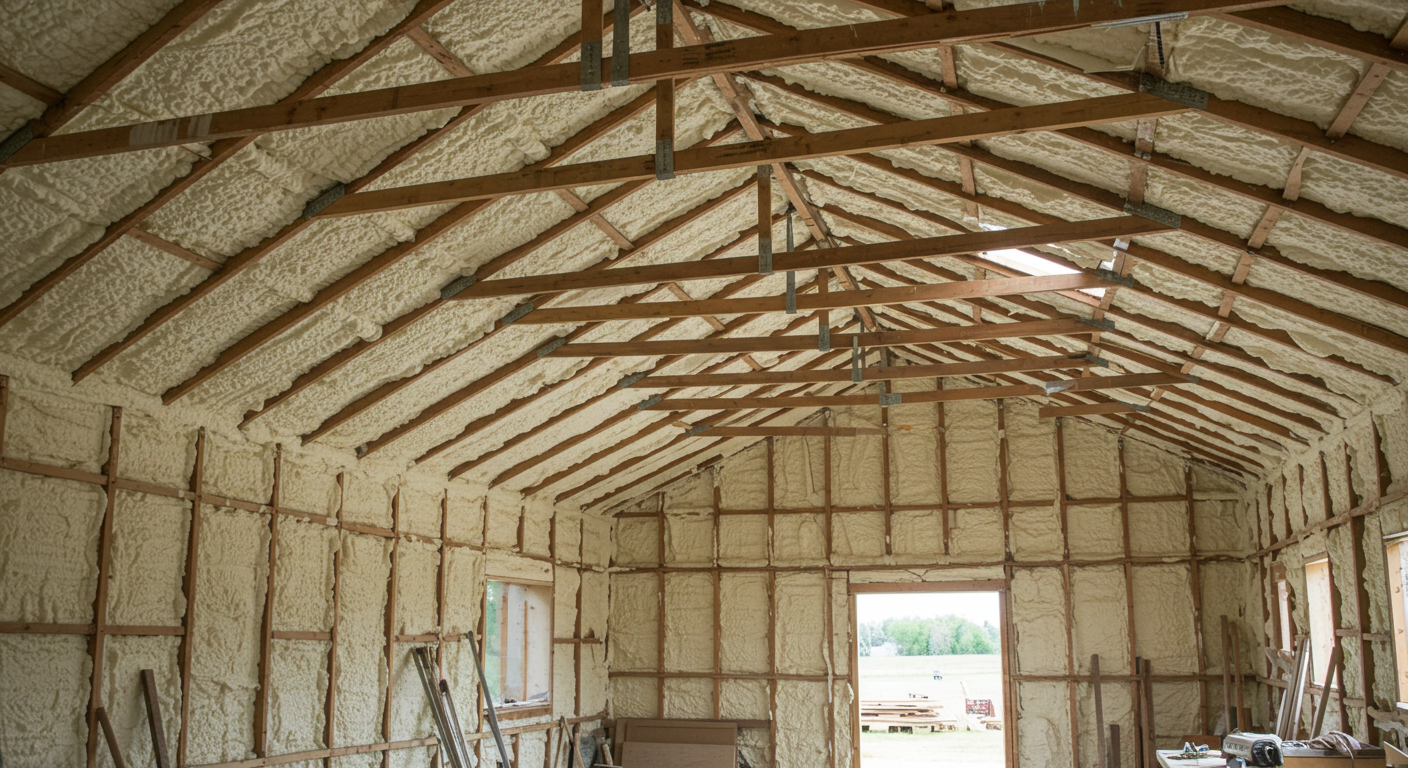
Insulating a pole barn is most effective during initial construction or prior to seasonal temperature shifts. Installing insulation before walls and ceilings are closed up allows full access to framing, reducing labor time and improving coverage. For existing structures, late spring or early fall offers mild weather that simplifies application and helps foam products cure correctly.
Delaying insulation can lead to heat loss, condensation issues, and higher energy costs. This article explains how timing affects insulation performance, cost-efficiency, and long-term durability. Insights are based on hands-on experience working with agricultural, commercial, and residential pole barns across the Ohio Valley region.
Spray foam requires specific temperature and humidity ranges to adhere properly and cure evenly. Insulating in extreme cold or hot conditions affects the foam’s density and structural bond.
| Season | Temperature Range | Pros | Cons |
|---|---|---|---|
| Spring (Mar-May) | 50°F – 70°F | Stable weather, easy curing | Pollen and moisture may affect prep |
| Summer (Jun-Aug) | 70°F – 90°F | Quick curing | High humidity can slow application |
| Fall (Sep-Nov) | 50°F – 70°F | Less humidity, ideal temps | Cooler evenings slow cure times |
| Winter (Dec-Feb) | Below 45°F | Rarely optimal, requires heating | Risk of improper expansion |
Bonus Tip: Closed-cell spray foam handles colder climates better due to its lower moisture permeability and higher R-value per inch.
| Insulation Type | R-Value per Inch | Application Temperature | Vapor Barrier | Typical Use |
|---|---|---|---|---|
| Closed-cell Spray Foam | 6.5 – 7.0 | 40°F – 100°F | Yes | Unconditioned or high-moisture areas |
| Open-cell Spray Foam | 3.5 – 3.8 | 60°F – 90°F | No | Interior conditioned spaces |
| Blown-in Fiberglass | 2.2 – 2.7 | N/A (dry install) | Requires added | Attics, retrofits |
The Ohio Valley experiences cold winters and humid summers. Insulation installed during late spring or early fall avoids temperature extremes and aligns with prep for peak energy demand months. Structures left uninsulated over winter risk moisture buildup, pest entry, and energy loss.
Bonus Tip: In humid regions like Ohio, vapor barriers or closed-cell foam are critical for barns storing feed, hay, or temperature-sensitive materials.

Ohio Valley Spray Foam provides insulation solutions tailored for pole barns in various use cases:
Install after rough-ins but before drywall to allow proper sealing around penetrations.
Yes, but additional heating and surface prep are needed. Costs may increase due to slower curing.
No ongoing maintenance is required if applied correctly. Periodic inspections are advised.
Energy savings often offset the cost within 3-5 years depending on barn usage and heating methods.
For project-specific guidance on pole barn insulation timing, contact:
Ohio Valley Spray Foam Phone: (740) 373-3626 Email: [email protected]
Get answers based on hands-on field experience with residential, commercial, and agricultural structures across varying climates and building types.
Most medium-sized pole barns can be fully insulated in 1-3 days depending on square footage and material type.
Closed-cell spray foam is ideal for metal structures due to its adhesion, air sealing, and condensation resistance.
Yes. Open-cell foam provides sound dampening benefits that help reduce echo and outside noise.
Yes, but retrofitting may involve more labor and limited access to concealed cavities.
Yes. Insulated barns typically attract more buyers and command higher prices due to energy efficiency and usability.